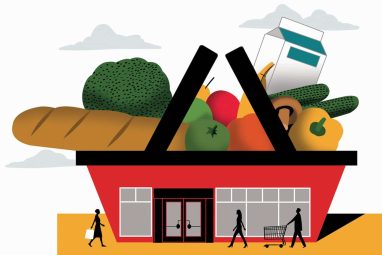Why the Shelf Is the New Moat in Quick Commerce
India’s instant-delivery race is moving from marketplace listings to stocked shelves as Blinkit, Instamart and Zepto tighten control over pricing, availability and fulfilment with micro-fulfilment, forecasting and short delivery radii.
News
- Nexus Closes Eighth Fund at $700 Million for Early-Stage Bets in India and US
- Amazon to Pump $12.7 Billion into India’s AI and Cloud Expansion
- Anthropic Debuts Interviewer Tool to Understand How People Really Use AI
- IPL Tops Google’s Search List for 2025 as AI Breaks Into India’s Top 10
- TeamLease Names Suparna Mitra MD & CEO in Leadership Overhaul
- Apple Loses Top UI Designer as Alan Dye Joins Meta

What began as a race to deliver groceries within minutes has entered a more complex, operationally intensive phase, with India’s leading quick commerce companies shifting away from lightweight marketplace models toward stocking their own inventory, managing fulfilment end to end, and building tightly run supply chains that value speed, reliability and precision.
Blinkit, the Zomato-owned platform now leading in market share, began its shift to an inventory-led model from 1 September, meaning it now buys stock directly and manages compliance and logistics in-house.
That change is intended to improve assortment control, pricing and fill rates. The company ended the June quarter with 1,544 dark stores after adding 243 in Q1 FY26, and management has guided to about 2,000 by December.
Instamart, Swiggy’s quick-commerce arm, is taking a parallel path on structure. Swiggy’s board on 23 September approved transferring Instamart to a wholly owned subsidiary via a slump sale, moving assets, liabilities, staff and IP to the new unit, with completion expected after the December quarter subject to approvals. The goal is more autonomy while still using Swiggy’s app traffic and delivery network.
Zepto, the most recent entrant into the top tier, is leaning on data and funding. In May, it launched Zepto Atom, a subscription analytics product pitched to brands for PIN-code-level and near-real-time views of demand, sales and conversion, which the company said will help with pricing and distribution decisions.
The pivot to owned inventory carries clear trade-offs. It ties up working capital and raises the stakes on forecasting and perishables, yet it also narrows the gap between what the app shows and what the picker finds, reduces substitutions and allows tighter control of promotions and margins at scale.
“As quick commerce shifts to inventory-led models, operational efficiency becomes both the biggest challenge and the sharpest differentiator,” said Shamael Zaheer Khan of Hyperzod, a B2B quick‑commerce platform. “Last-mile optimization, warehouse automation, and predictive analytics are now indispensable if you want speed and margin discipline.”
Sector analyses and company materials consistently point to real-time inventory visibility, optimized picking and routing, and dense micro-fulfilment footprints as the operating backbone behind ten- to thirty-minute delivery promises.
Khan added that tighter stock control “lets operators run real-time promotions and targeted offers to accelerate sell-through and improve inventory turnover.”
“Quick commerce in India is a scale-and-speed race driven by three levers—dense dark-store networks, data-led forecasting, and monetization through retail media and marketplace economics,” said Meenal Goel, founder of CreateHQ, a social subscription platform for creators..
That operating logic is now visible in strategy. “Blinkit looks strongest today on urban density and customer reach, while Zepto’s strength is capital-backed network build-out, and Instamart benefits from Swiggy’s funnel and delivery scale,” Goel said.
“Quick-commerce players will now have to accelerate their technology adoption for advanced demand forecasting, real-time inventory management, and dynamic pricing tools to manage working capital efficiently and minimize spoilage,” said Tanvi Shah, senior director at CareEdge Advisory, who added that the shift toward inventory-led models would also increase pressure on local kirana stores already struggling to match prices and selection.
The demand backdrop is supportive. Bain & Company with Flipkart estimates that in 2024 more than two-thirds of all e-grocery orders in India were made via quick-commerce platforms, with the channel forecast to grow over 40% annually through 2030.
LTIMindtree’s July paper pegs the market at $5.38 billion in 2025, rising to about $9.95 billion by 2029.
Management tone matches the push for scale. In Eternal’s Q1 FY26, executives highlighted added warehousing space and the intent to communicate a path to 3,000 stores after hitting the current milestone.
As Blinkit cofounder Albinder Dhindsa put it, the battle is no longer just about growth, but about holding position in a space that’s become both capital-intensive and operationally unforgiving: “Under no circumstances will we let go of our market position here or lose sight of the prize in the long term.”
In practice, the prize goes to the operator that keeps shelves matched to neighborhood demand, delivers when promised and does both with predictable unit economics, not only in Mumbai, Delhi or Bengaluru but across tier-II cities where rents and wages help the math.




